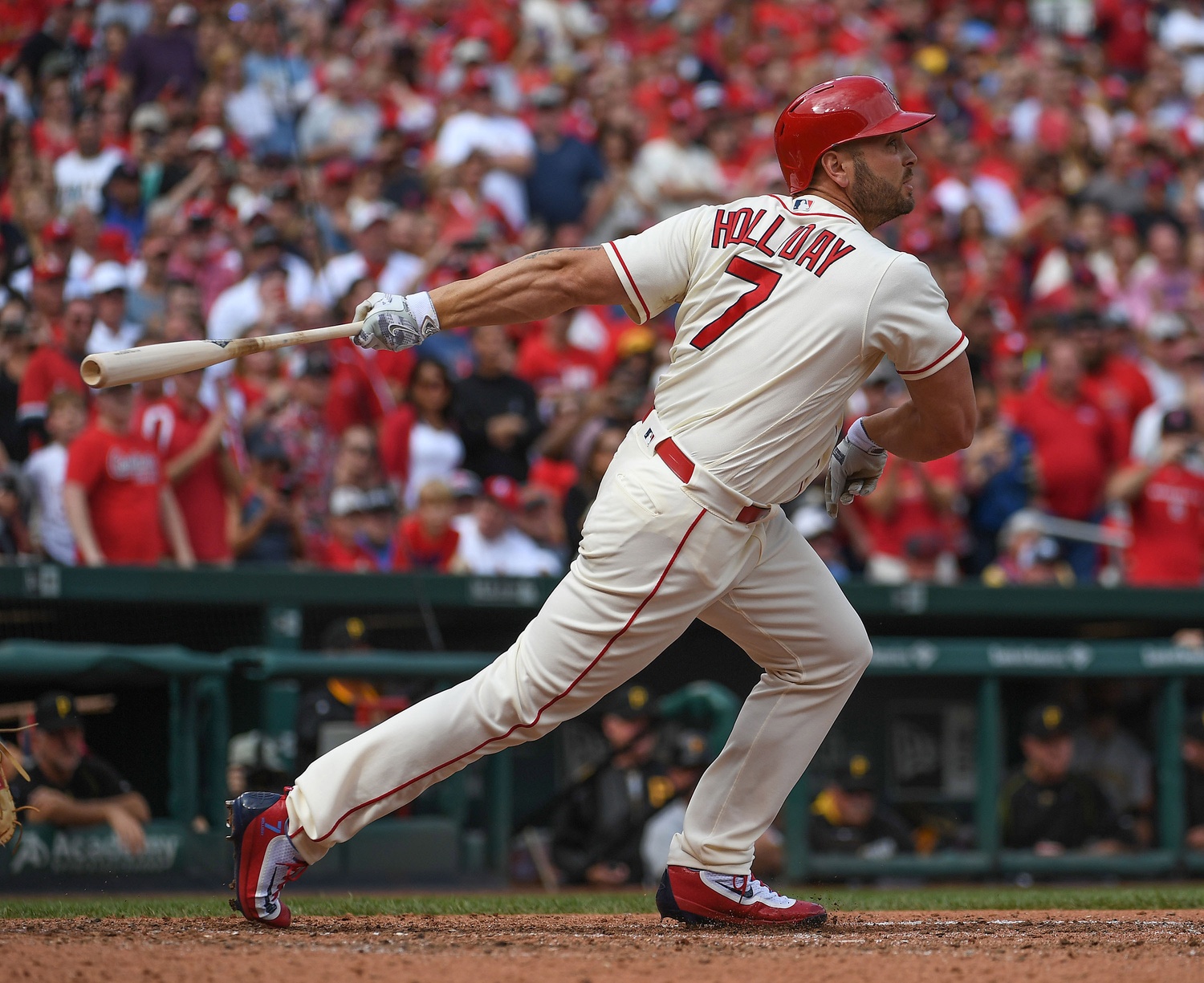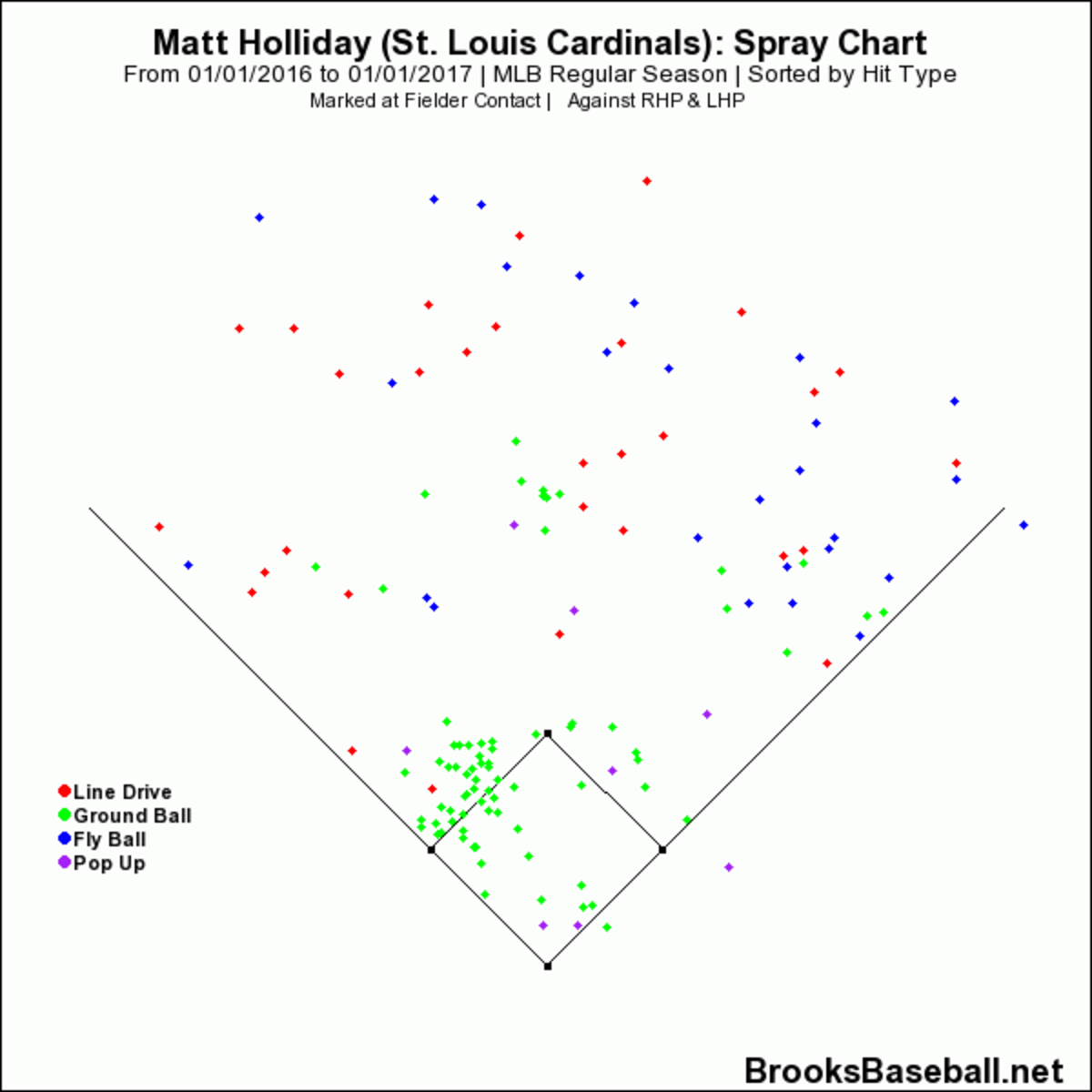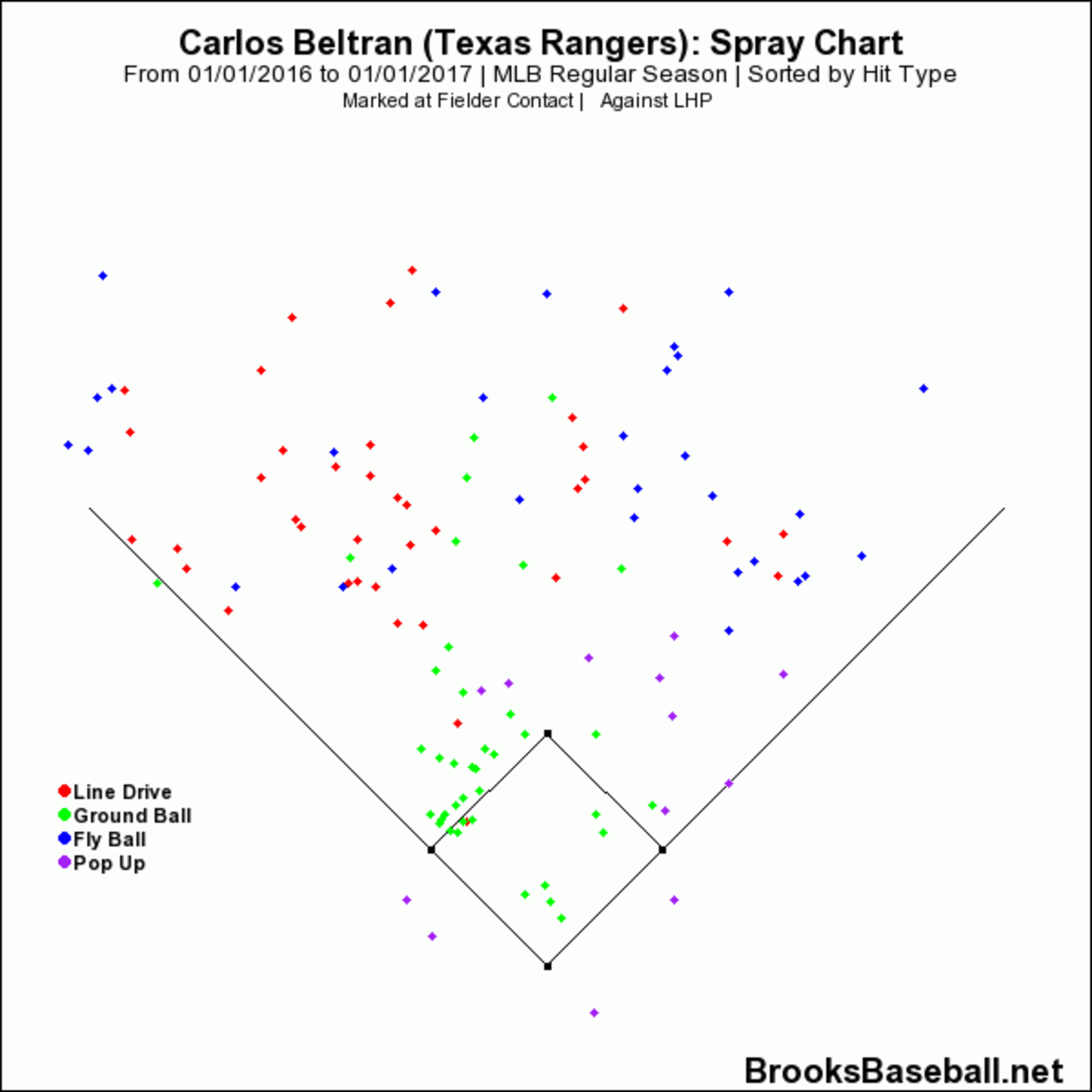Carlos Beltran was a stereotypical Yankee. On the last leg of his career, Beltran signed a short deal and provided a veteran presence in the clubhouse. His Yankee path was similar to quite a few aging outfielders in recent years, following in the footsteps of Raul Ibanez, Vernon Wells and Ichiro. But with general manager Brian Cashman trading Beltran to the Texas Rangers over the summer, the Yankees needed to find another outfielder in a similar mold. It turns out that outfielder will be Matt Holliday, who reportedly signed a one-year, $13 million deal with New York on Sunday.
Over the course of his 13-year career, Holliday has played for the Rockies, A’s and Cardinals, spending his last seven-plus seasons with St. Louis. He has had some trouble staying healthy over the past two seasons, playing in only 183 games during that time. Holliday is no longer the player who can hit 25 home runs and score 100 times, but he should be able to replicate Beltran’s stats, or even exceed them.
Holliday and Beltran put up similar numbers last season. Below, we can see the similarities in their offensive production: (Beltran’s stats include his time with the Texas Rangers)
| 2016 Stats | AVG | OBP | SLG | BB/9 | K/9 | TAv | VORP | WARP |
|---|---|---|---|---|---|---|---|---|
| Matt Holliday | .246 | .322 | .461 | 8.2% | 16.7% | .279 | 15.4 | 1.1 |
| Carlos Beltran | .295 | .337 | .515 | 5.9% | 17.0% | .279 | 15.1 | 1.2 |
While Beltran hit for more power than Holliday, their adjusted outputs are nearly identical. The two had the same True Average (TAv) despite Holliday’s injuries forcing him to miss more than 50 games last season and record about 150 fewer plate appearances. Their VORP and WARP are also almost exactly alike, which is remarkable given Beltran’s production with the Yankees. Beltran actually recorded negative VORP and WARP in Texas, with -1.2 and -0.2, respectively.
Even though Holliday won’t hit for as many home runs as Beltran, he can make up for it by taking advantage of the large left-center and right-center gaps at Yankee Stadium, as Holliday has typically profiled as a doubles hitter over the course of his career. Additionally, Holliday could also draw more walks than Beltran — Holliday’s 2016 walk rate was his lowest since 2007. But that’s where the differences end. The Yankees are basically getting a slightly younger version of Beltran, who was a slightly younger version of Ibanez.
For some more insight, here is a comparison of Holliday’s and Beltran’s career stats:
| Career Stats | AVG | OBP | SLG | BB/9 | K/9 | TAv | VORP | WARP |
|---|---|---|---|---|---|---|---|---|
| Matt Holliday(13 seasons) | .303 | .382 | .515 | 9.9% | 16.4% | .304 | 517.4 | 46.3 |
| Carlos Beltran(17+ seasons) | .281 | .354 | .492 | 10.0% | 16.1% | .292 | 646.4 | 67.9 |
Holliday’s numbers are slightly inflated due to spending the first five years of his career playing home games at Coors Field. During his best years in Colorado, he hit 30-plus home runs per season, whereas he hasn’t hit more than 28 since being traded to Oakland. Additionally, Beltran has racked up more VORP and WARP due simply to his career being longer, and as he has aged, his productiveness has waned considerably.
The biggest overall difference between Beltran and Holliday is their handedness — Beltran is a switch hitter whereas Holliday is a pure righty. Most of Beltran’s at-bats have come as a left-handed batter, which is a plus at Yankee Stadium. Two of New York’s most prolific power hitters since the ballpark opened in 2009, Robinson Cano and Curtis Granderson, were lefties. But heading into 2017, the Yankees already had a lefty-heavy lineup, featuring Jacoby Ellsbury, Brett Gardner, Didi Gregorius and Greg Bird. Although he doesn’t have the luxury of batting from both sides of the plate, Holliday balances out the lineup regardless.
A look at their 2016 spray charts shows how both hitters are capable of hitting to all fields. Controlling for Holliday’s right-handedness, I’ve compared all of Holliday’s contact with Beltran’s contact as a right-handed hitter.
Holliday’s is slightly more sparse because he missed time, but otherwise there’s a very similar distribution of line drives to all fields, as illustrated by the red dots. Indeed, their hard-hit rates are almost equal — Holliday at 38.5% and Beltran at 35.8%.
Replacing Carlos Beltran with Matt Holliday was a great move from Brian Cashman, as he is effectively replacing Beltran with a clone. Holliday’s relative youth adds the potential for a 2017 season than was better than Beltran’s 2016. With the horde of young talent procured when Beltran was traded, it’s almost like the only thing that’s changed is the Yankees’ farm system.
Photo: Scott Rovak / USA Today Sports


